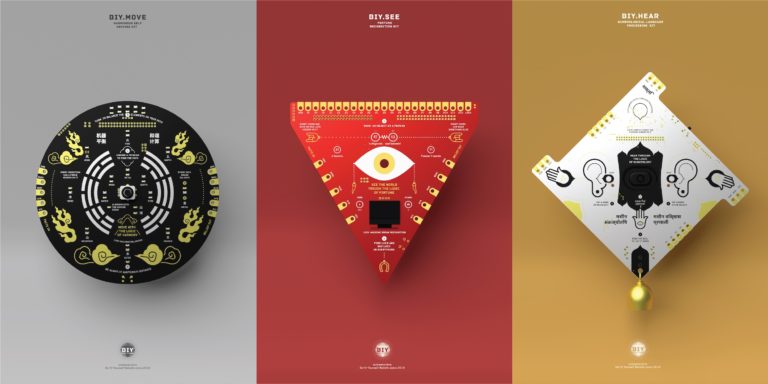
Created by Shanghai based design studio automato.farm, ‘BIY™ – Believe it Yourself’ is a series of real-fictional belief-based computing kits to make and tinker with vernacular logics and superstitions.
The Raspberry Pi is a credit-card-sized single-board computer developed in the UK by the Raspberry Pi Foundation with the intention of promoting the teaching of basic computer science in schools. Learn more

Created by Shanghai based design studio automato.farm, ‘BIY™ – Believe it Yourself’ is a series of real-fictional belief-based computing kits to make and tinker with vernacular logics and superstitions.
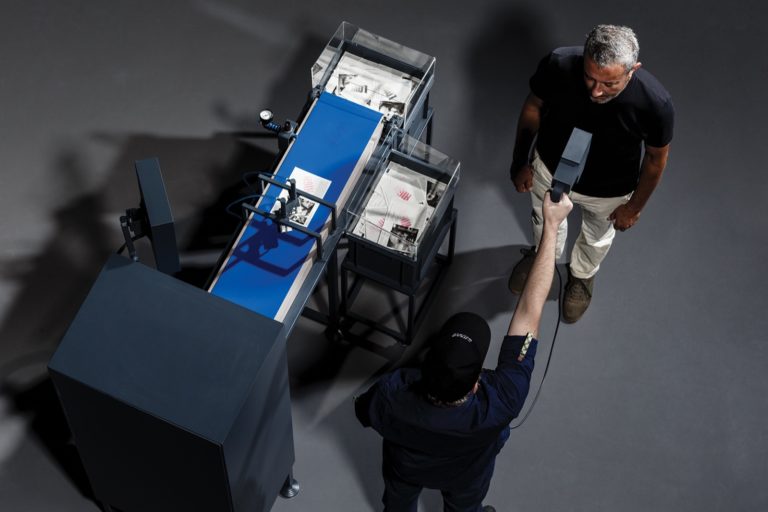
Created by Marta Revuelta, AI Facial Profiling, Levels of Paranoia is a project exploring the potential and implication of AI technologies by proposing a machine that recognises the ability of an individual to handle firearms and predicts their potential to cause harm from a biometric analysis of their face.
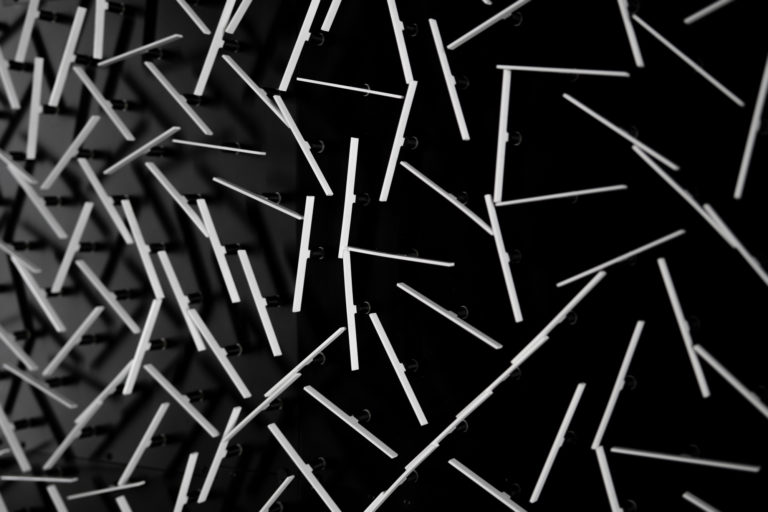
Created by Ralf Baecker, Putting The Pieces Back Together Again is an artistic investigation and meditation about complex systems and scientific methodology. Consisting of 1250 stepper motors arranged in a two dimensional grid, each motor in the installation moves in a random direction, sometimes intersecting and reversing direction, producing emergent constellations and behaviours.
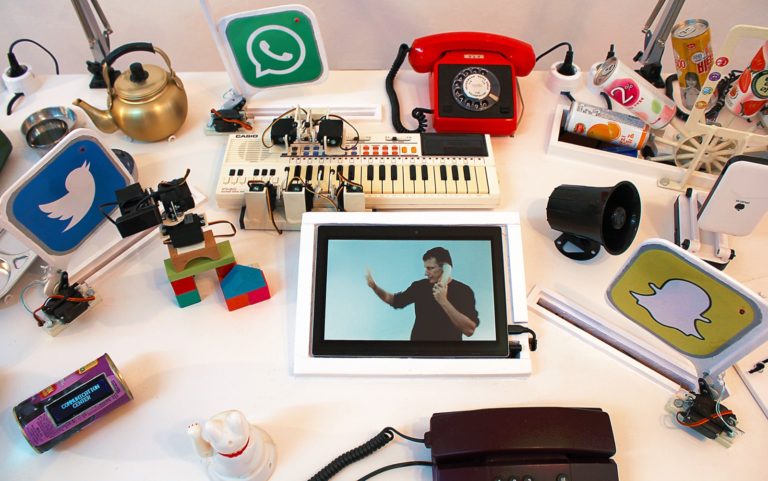
Created by Ralph Kistler, ‘Internet of Shrimps’ examines in an ironic and playful way the industries´ promises for an enhanced experience in a completely interconnected smart home, often be acclaimed as the next big technological revolution: the Internet of Things.
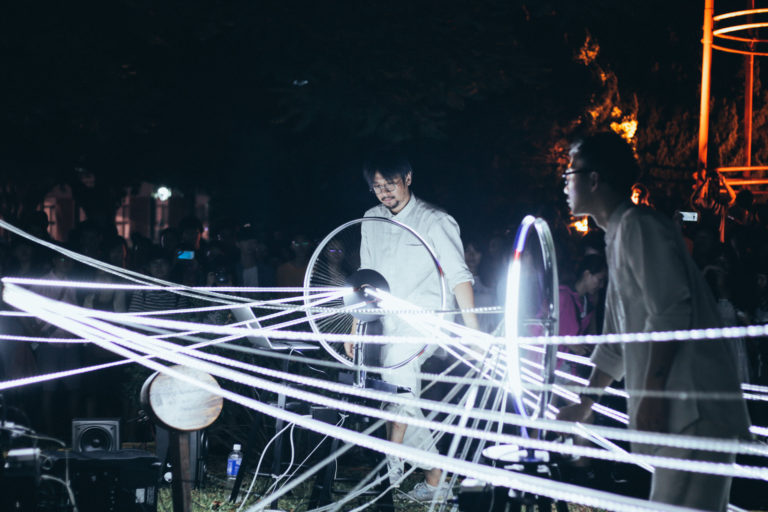
Created by Taipei based Keith Lam, Seth Hon and Alex Lai, “Cycling Wheel” in an installation and performance that borrows the concept of Marcel’s Bicycle Wheel and re-imagines it as a dynamic and interactive performative instrument, transforming its mechanics into sound and light.
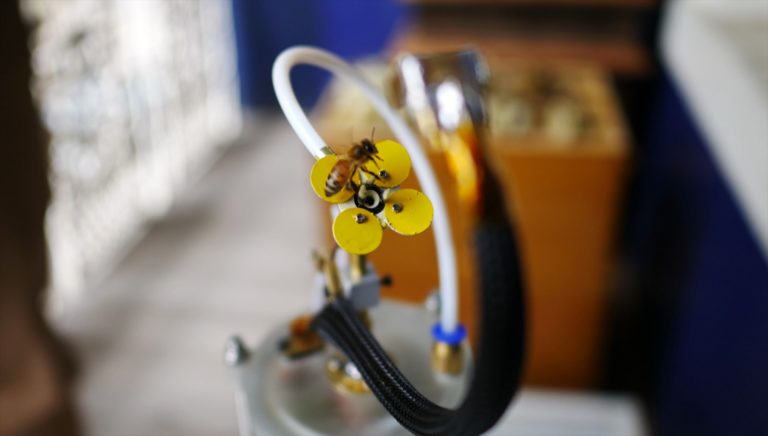
Created by Michael Candy, “Synthetic Pollenizer” is a conceptual intervention in real-world ecological systems using artificial flowers. Inspired by natural pollenizers, these robotic replicas artificially pollinate bees, integrating into the reproductive cycle of local flora; an initiative into a cybernetic ecology.
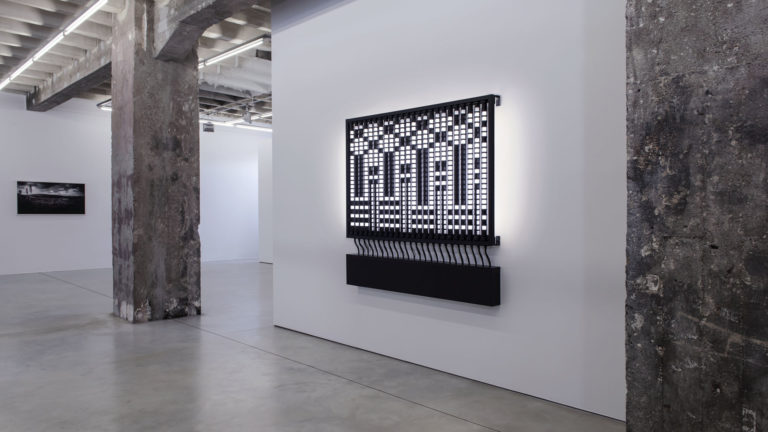
Created by Berlin based onformative, true/false is a kinetic sculpture comprised of arrays of circular black metal segments set in mechanical columns. Interlocking and rotating around fluorescent light tubes, the cylinders cover or expose the light to display an endless number of patterns.
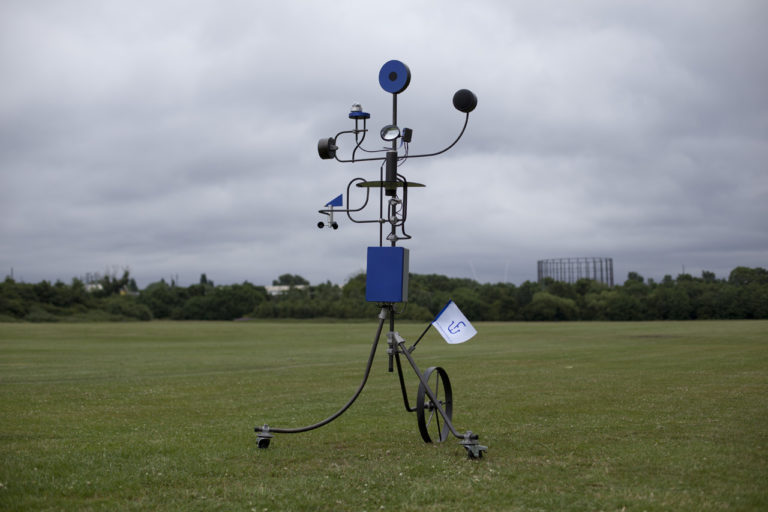
Created by David Colombini, The Weather Followers is a commentary on ‘smart’ applications and predictive, comfortable digital routines. Instead of relying on ‘accurate’ data, intangible algorithms and hidden lines of code-driven lifestyles, this device brings serendipity to your digital life, using constantly evolving weather data recorded by four weather instruments.

Created by Noriyuki Suzuki, “Oh my ( )” is an installation that calls GOD in 48 languages using Twitter API. The machine monitors the Twitter timeline in real time and when a tweeted text includes a word, god ( in various languages ), speakers sound “oh my ( god in the tweeted language )” at the same time.
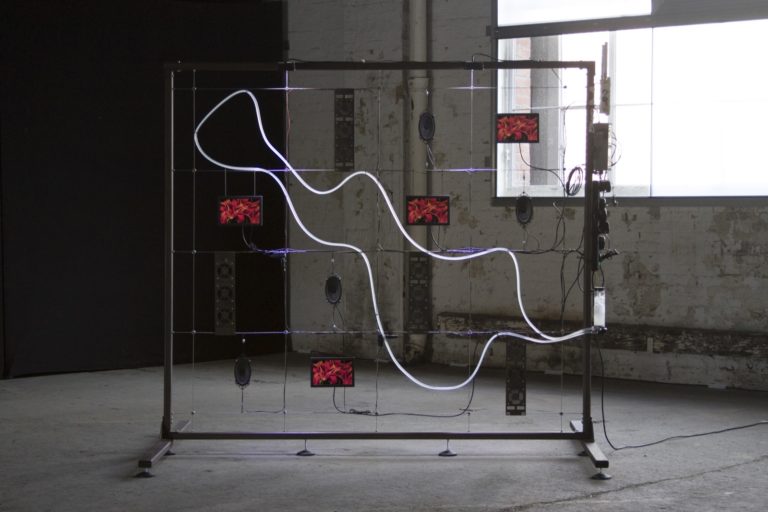
Created by Thomas Grogan, Floral Automaton is a sculptural device that grows flowers digitally. Using various sensors taken from Smart Cities technologies, it reacts and adapts itself to its environment in real time.
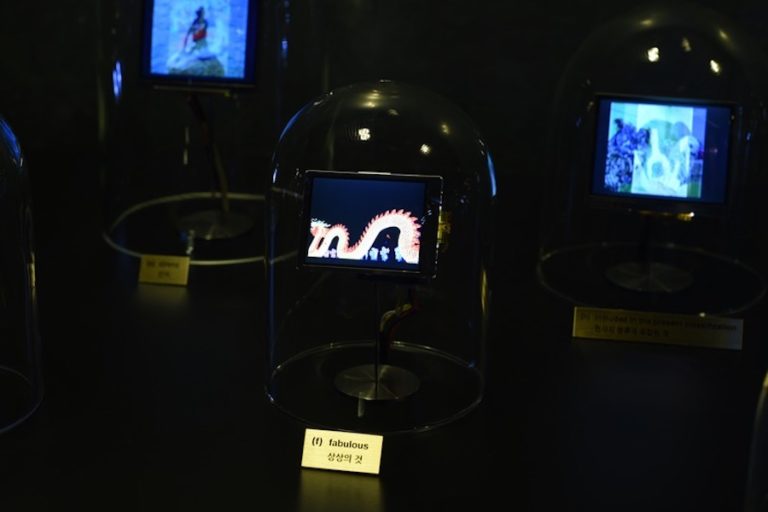
Created by Seoul based artistic duo Shinseungback Kimyonghun, ‘Animal Classifier’ is an AI trained to divide animals into arbitrary classifications to foreground the imperfections and edge cases in classification systems.
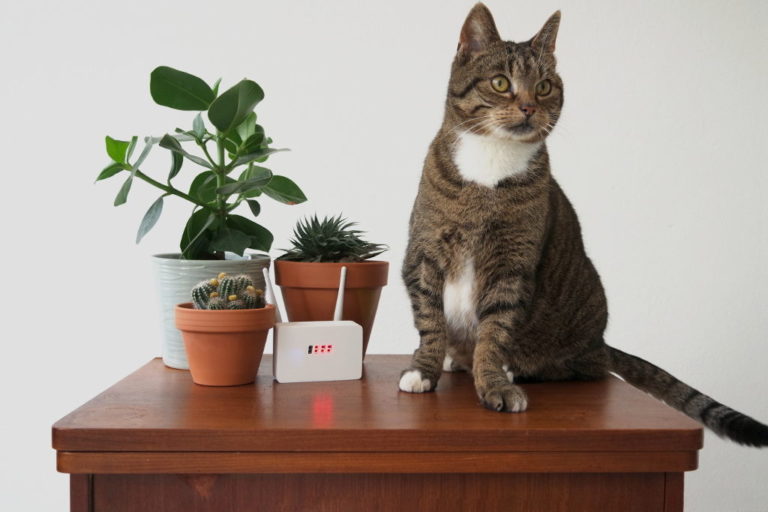
Created by Jasper van Loenen, Linger is a small, portable device that allows you to create and blend into a virtual crowd by storing the specific WiFi signals from everyone that comes near you, and rebroadcasting their signals infinitely when they leave, making it seem as if they are still there.
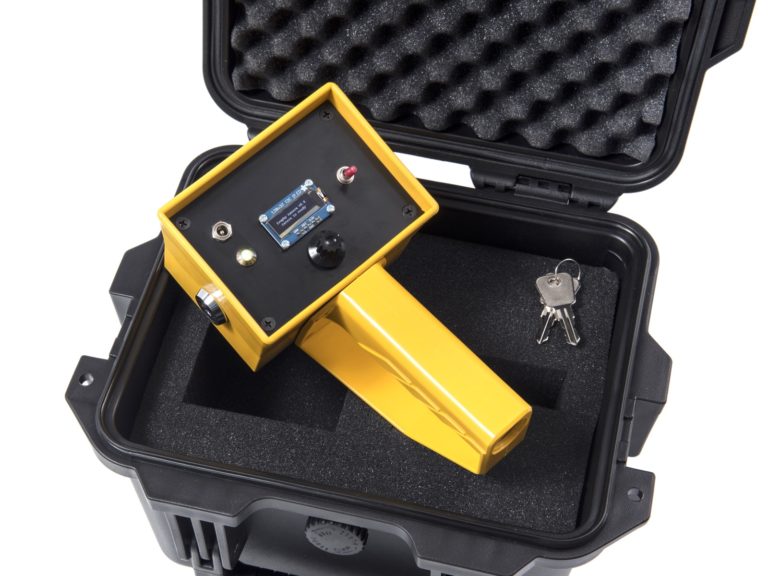
Created by Dries Depoorter in collaboration with Max Pinckers, Trophy Camera is a photo camera that can only make award winning pictures. Just take your photo and check if the camera sees your picture as award winning.
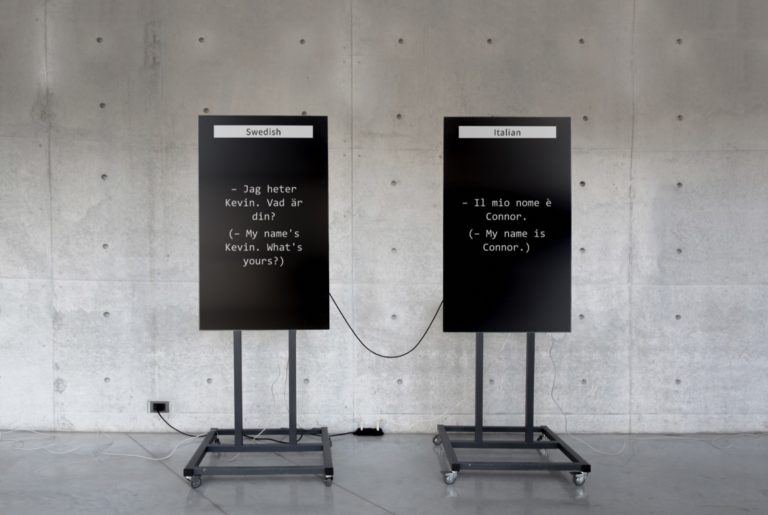
Created by Jonas Eltes at FABRICA, “Lost in Computation” is a a multilingual conversation between two Chatbot AIs trained in Swedish and Italian, translated through Google Translate, exploring how the multiple layers of computation in today’s digital landscape distorts our communication.
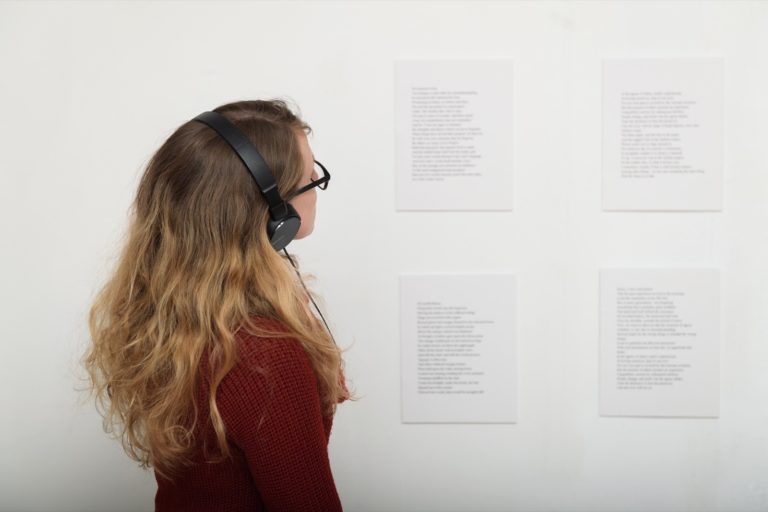
In the final week of the last year’s fall 10-week program at the School for Poetic Computation (SFPC), students presented their work in progress and its underly ideas in a public showcase. Here is a selection of projects that were presented.
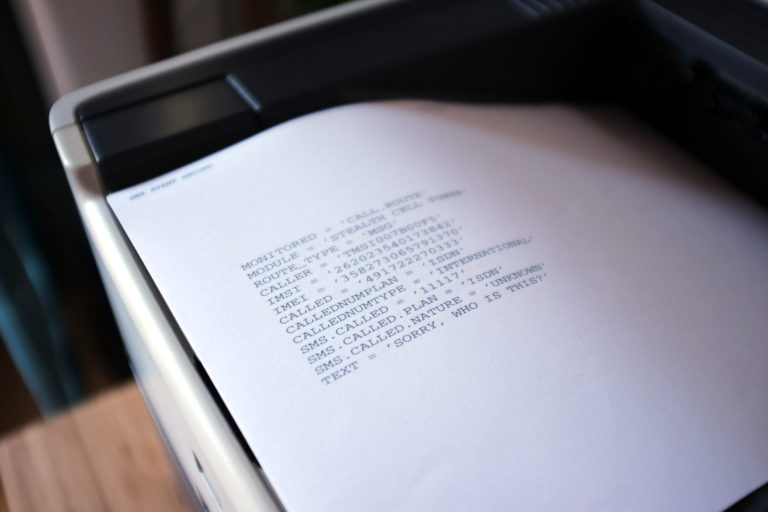
Julian Oliver’s latest hardware provocation is a fake cellular tower masquerading as an HP laserjet printer. The device evokes ubiquitous ‘StingRay’ surveillance technology and the real (fake) cell towers that pepper urban landscape.
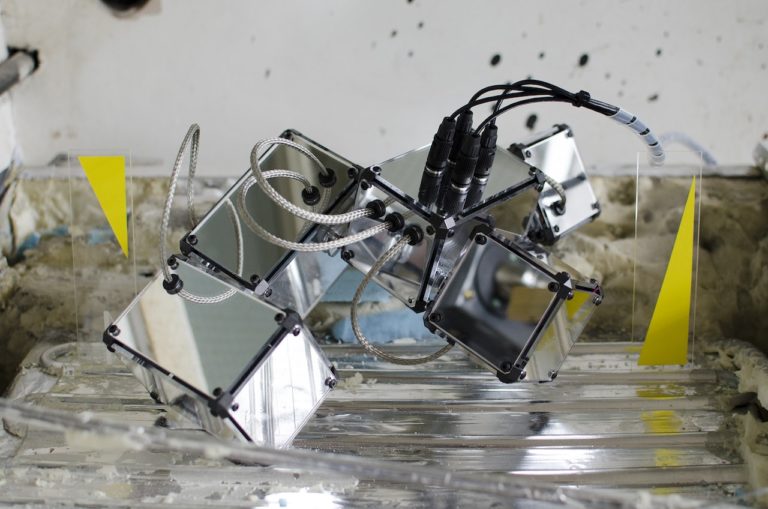
Created by Riccardo Lardi, The Reality Gap is a research project that investigates how robot movements evoke empathy towards humans and speculates where will the next generation of robotic systems come from and where will they go.
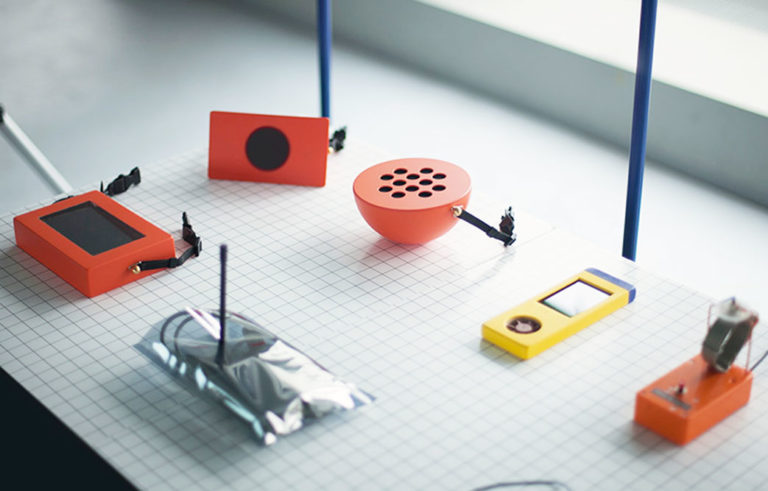
Created by Jochen Maria Weber, Foxes Like Beacons is an exploratory project using open data of public radio stations with inexpensive, low-power signal detection in order to create an open positioning system.
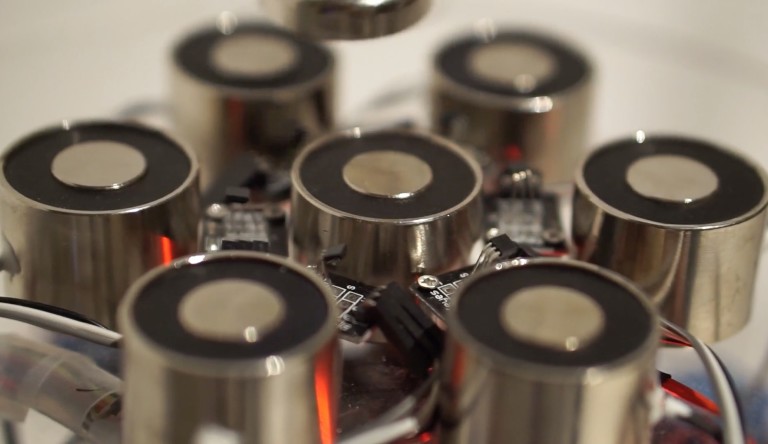
Created by Fito Segrera, Conversations On Chaos is a project that explores the idea of order as an emergence from chaos. It uses chaos theory and elements from dynamic system studies and experimentation in order to create a system where two machines hold a chaotic conversation about chaos.
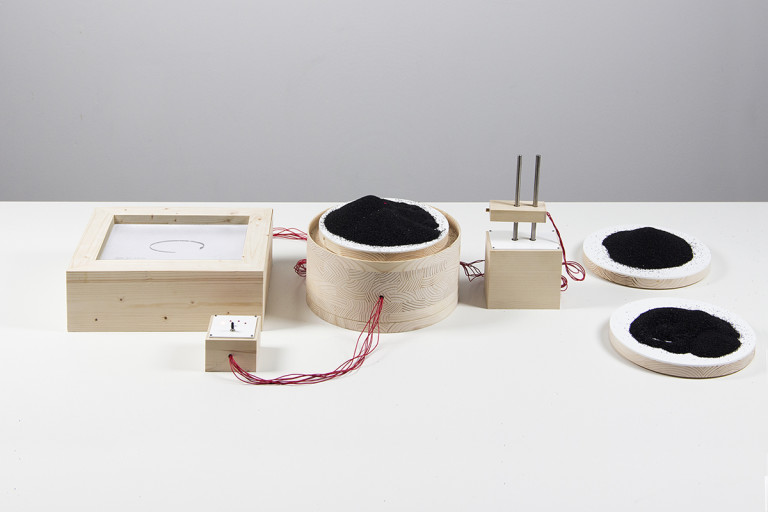
Created by Luiz Zanotello at the University of the Arts, Bremen, The New Velocity is a machine designed to plot the phantom Sandy Island using digital as a new analogy for its existence. The project investigates a charting error that persisted in cartographic maps even after the advent of digital media. It speculates how data and physical phenomena are entangled, and how in contemporaneity, the two have the same weight under digital media.
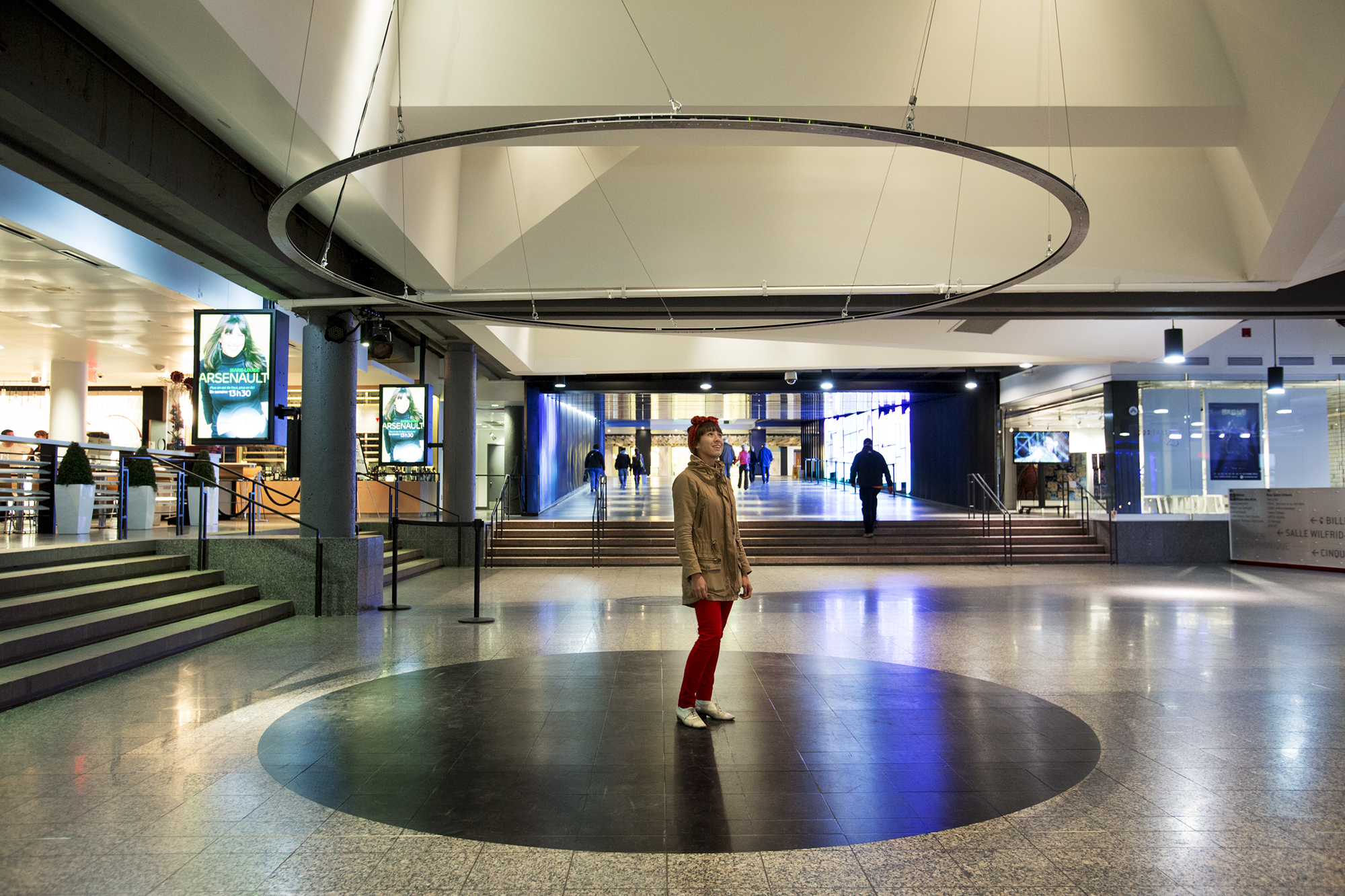
Created by Copenhagen-based artist and researcher Tobias Ebsen, Poème Mécanique is an electromechanical sound sculpture produced for Espace culturel Georges-Émile-Lapalme, a public walkway connecting the Place-des-Arts metro and Complexe Desjardins in Montréal.
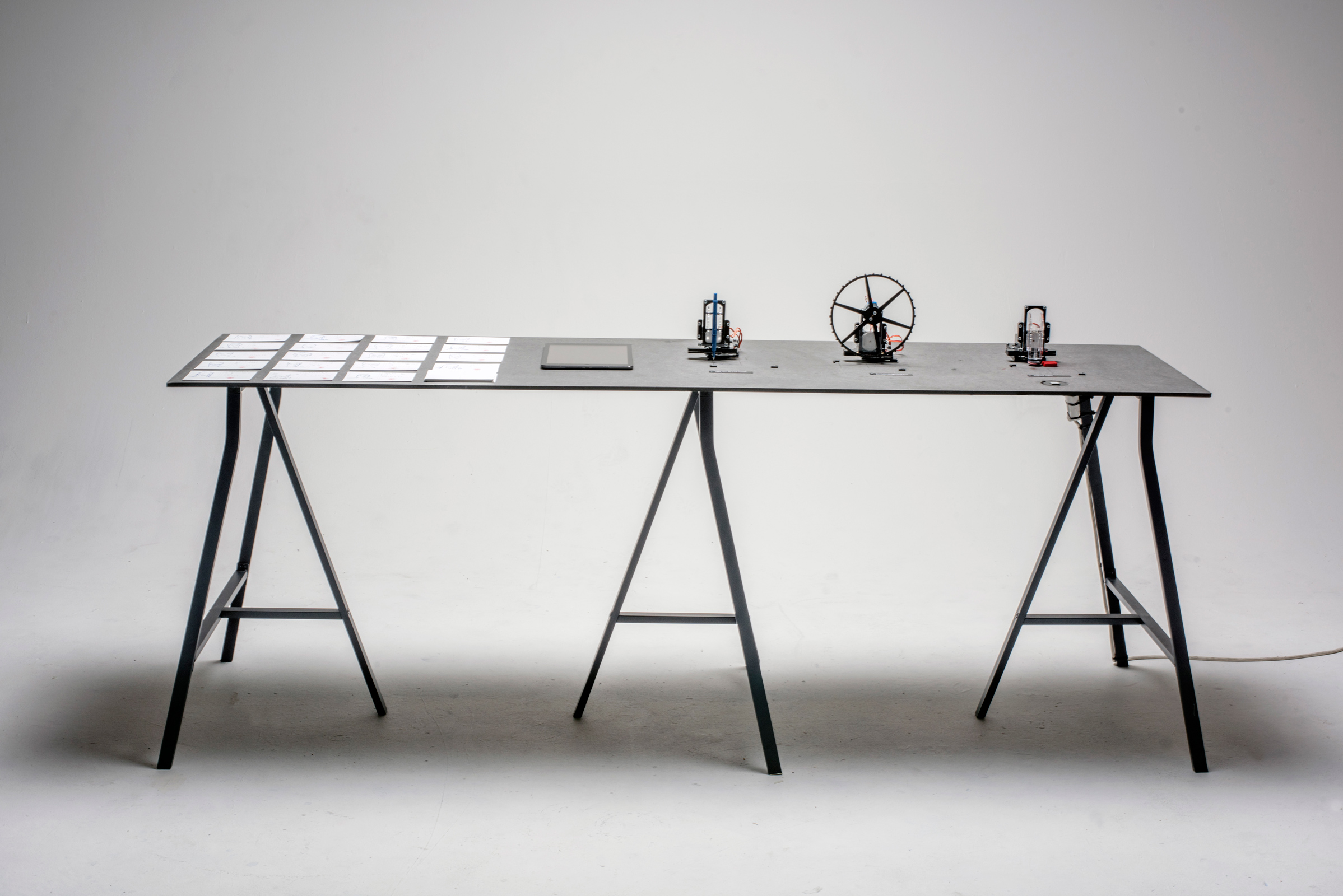
Created by Martin Hertig at ECAL, Sensible Data is a playful installation consisting of three machines that collect user’s personal data, evaluates mood, age, gender and beauty, to create a ‘passport’ that user can take away but which also randomly sent (without user’s knowledge) to another participant.
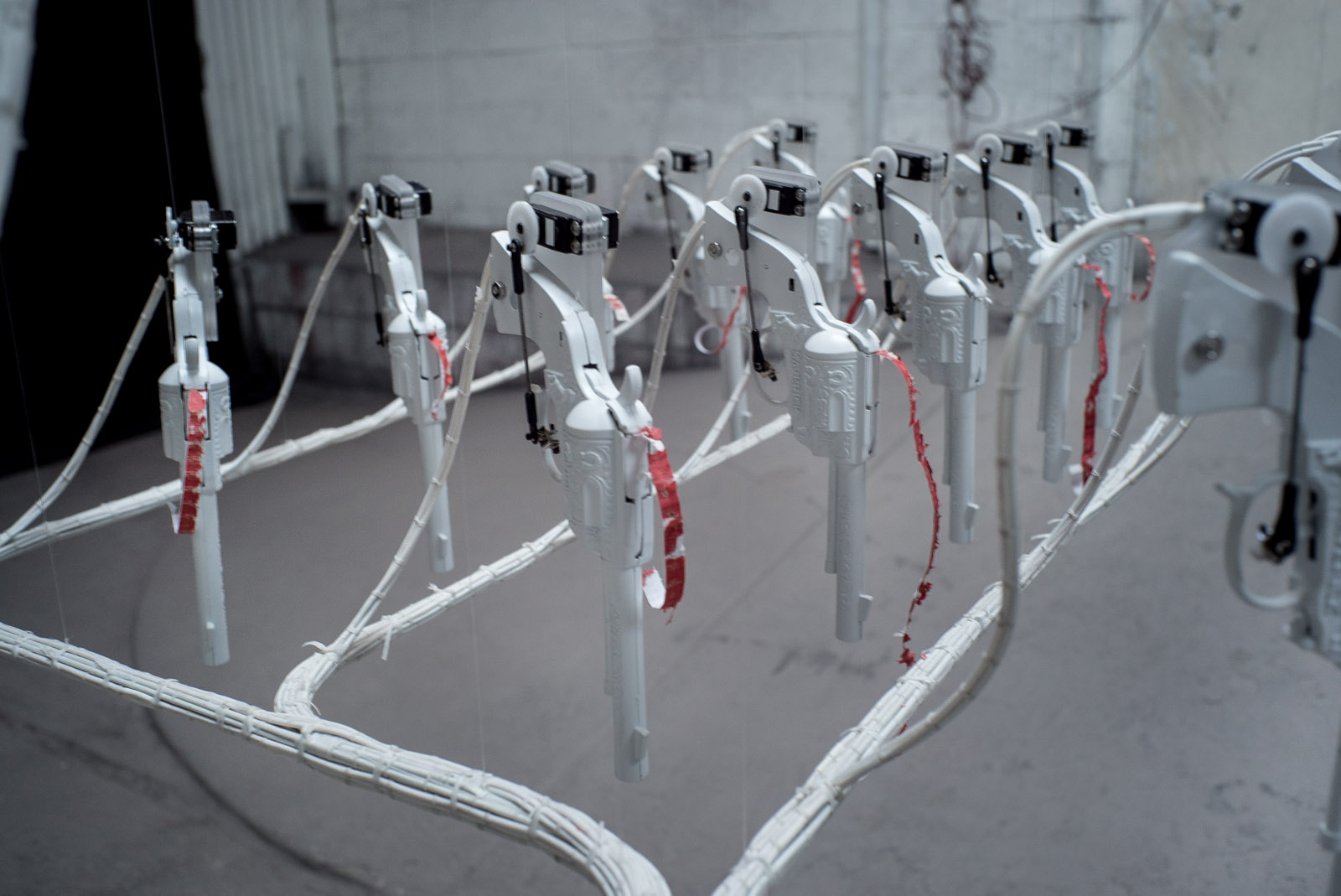
Created by Jonathan Fletcher Moore, Artificial Killing Machine is an autonomous mechanical installation that uses the public database on U.S. military drone strikes to visualise deaths of individuals that would otherwise be represented purely as statistical data.
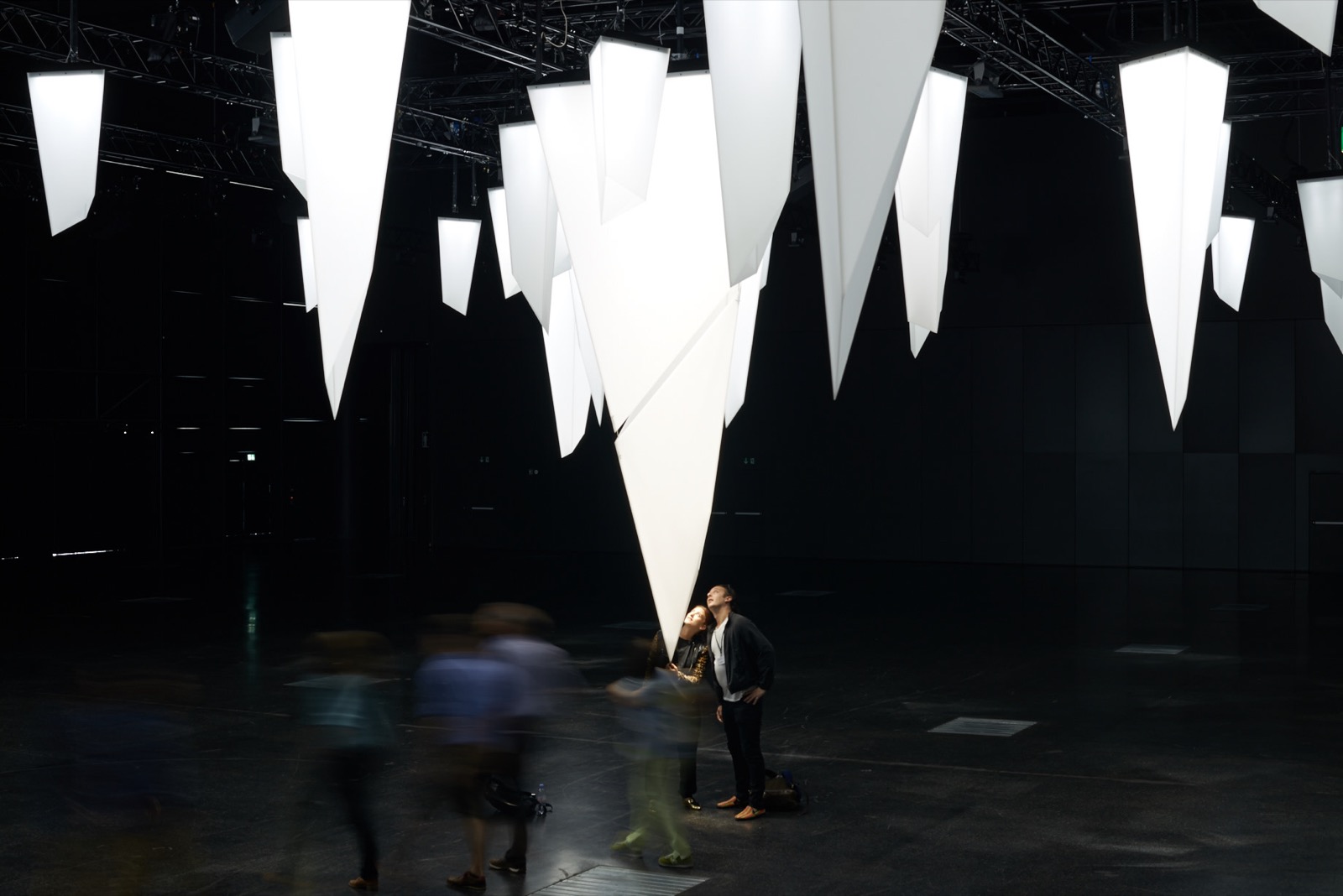
Created by Jamie Zigelbaum, Triangular Series is a site-specific lighting installation composed of numerous, truncated tetrahedral forms. Each object has an unique form and senses the other and the physiological rhythms of visitors beneath them.
Support CreativeApplications.Net
Since 2008, CreativeApplications.Net (CAN) has been a driving force, tirelessly influencing and shaping the conversations surrounding technology, society, and critical making. With a community of 1600+ members and a vast library boasting over 3,500 meticulously curated projects, experiments, texts, and reviews, CAN stands resolute as an unparalleled resource for students, educators, practitioners, curators, and cultural producers.
However, as we navigate the stark reality of independent publishing, we need your help! Please embark on this journey with us, extending your support by joining our community as a Member and contributing to our shared mission of propelling CAN forward.
Joining CAN is only $20 per year! (less than $2 per month) and it includes:
Joining CAN as an organisation (up to 40 users) is $200 per year and it includes:
You can also support CAN by donating
Click continue to donate with Stripe or you can also use PayPal, ETH, Bitcoin or Tezos